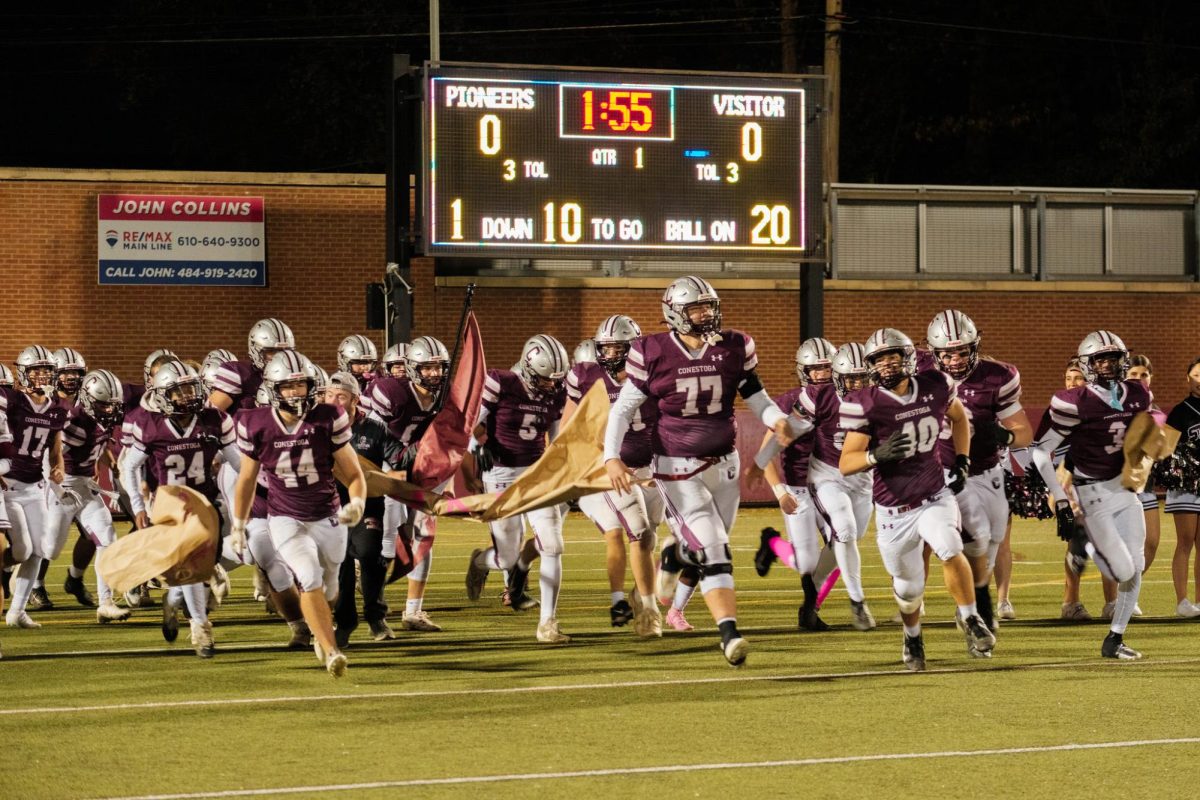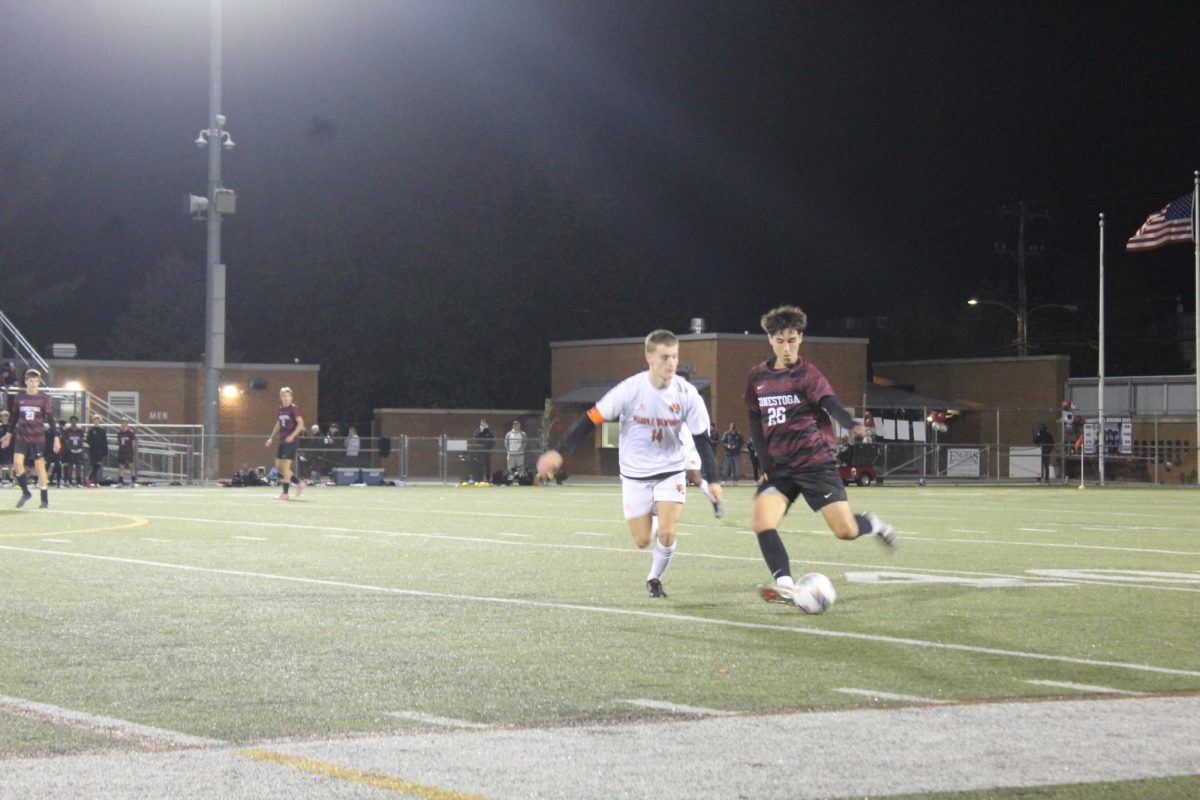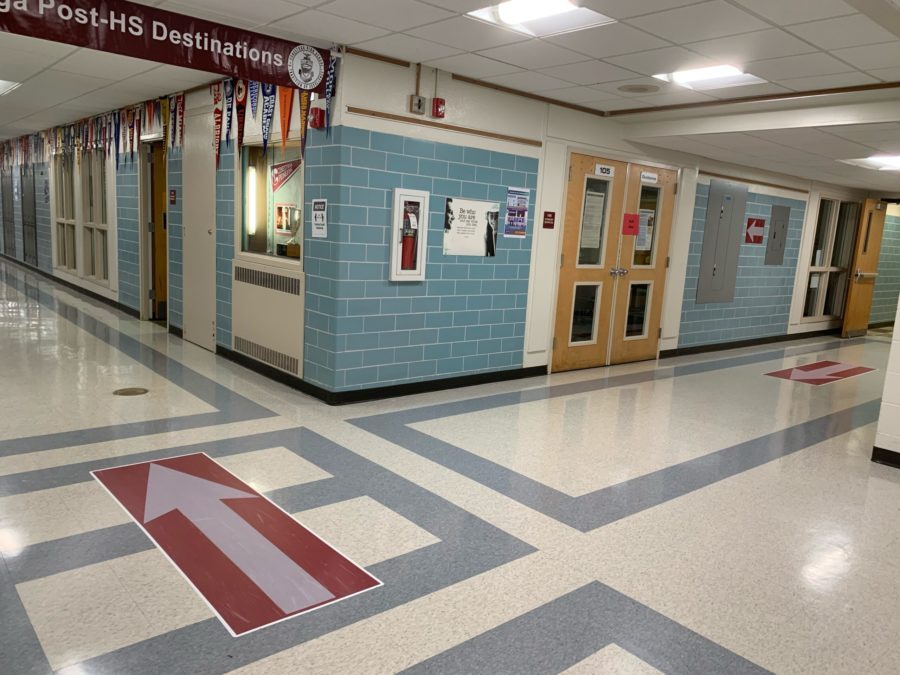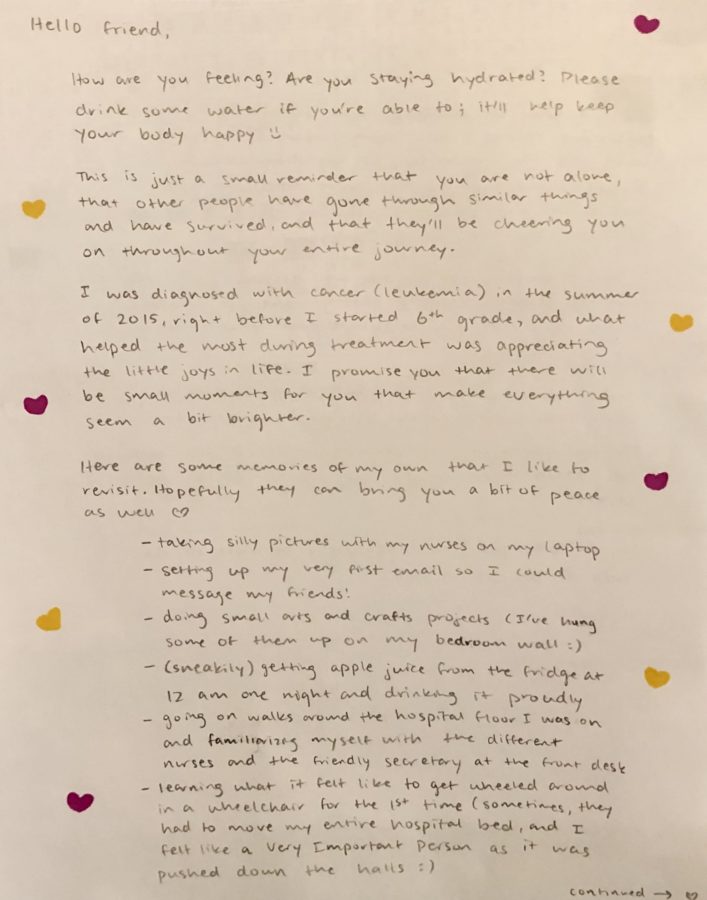By Mindy Wang, Staff Reporter
One-way hallways are a major change this year at Conestoga high school for hybrid learning. One-way hallways are a system that helps ease traffic so students can social distance by giving each hallway one direction.
One-way hallways were implemented in accordance with state safety guidelines. Students must walk in the designated direction of the hallway, no matter how convenient it is to go the other way.
The new system has affected students and staff alike. Hallways have caused more problems for upperclassmen than freshmen since upperclassmen need to learn new routes to classes, according to AP world history teacher Emily McGready. Freshman had an easier time adjusting to the system after they learned the general hallway patterns because one-way hallways are all they’ve ever known.
“For freshmen (during) the first couple weeks, especially because they’re not sure where their classes are, a couple times they pass their class and have to circle around a few times,” McGready said.
Upperclassmen must learn new paths to class, which might differ from previous routes taken in earlier years. They must totally rearrange their memory of the building. Although students need to adjust to new conditions around school, students can see the effectiveness of one-way hallways.
“I definitely noticed the change from my previous years,” said junior Tamara Rushby. “Because (of) the lack of the high population there usually is, I have noticed that there is a drop in the number of people you encounter in the hallway.”
Students mainly view the one-way hallways as an inconvenience, but not a serious issue because they are not detrimental to any other aspects of school, such as academics.
“I don’t really have anything strictly against it(one-way hallways). I know why they implement one-way hallways and if it keeps me safe, it’s something I’ll not happily do but I’ll do,” Rushby said.
One-way hallways have also affected teachers and staff within the building. Teachers that change classrooms between periods are especially impacted and are often in danger of being late to their next class. Since teachers usually take breaks, go to the bathroom or print assignments between periods, one-way hallways can transform a short walk into a tedious commute. However, some see this as an opportunity rather than a disadvantage.
“I like taking the opportunity to walk around the school, to take your big stroll. I know it’s going to take the time but sometimes you need to give yourself that break and be like, ‘you know what, we’re going for a walk,’ or ‘we’re gonna take a few minutes to think about our day to reflect on things so far,’” McGready said.
However, some hallway directions are disregarded when students are away from the watchful eyes of faculty and administrators. One such example is the hallway leading from the main entrance to the gym. Students are also known to sneak backwards to a class or the bathroom if it is closer.
“I can see the merits of it, social distancing by enforcing people to walk one-way in a hallway, but most don’t really say six feet apart anyway,” Rushby said.
Administrators believe students have followed the rules of the hallways relatively well. Patrick Boyle, the 12th grade assistant principal, regularly goes out in the hallways on break and has not seen any students who purposely break the rules. Boyle sees students trying their best to stay six feet apart from each other and following arrows on the floor showing the direction of the hallway.
“I believe firmly that every guideline we have followed creates a safe environment for all the teachers, staff, and students whenever they’re here,” Boyle said.


























































































